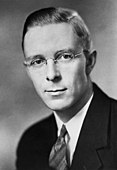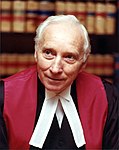Alberta general election, 1959
|
|
|||||||||||||||||||||||||||||||||||||||||||||||||||||||||||||||||||||||||||||||||||
|---|---|---|---|---|---|---|---|---|---|---|---|---|---|---|---|---|---|---|---|---|---|---|---|---|---|---|---|---|---|---|---|---|---|---|---|---|---|---|---|---|---|---|---|---|---|---|---|---|---|---|---|---|---|---|---|---|---|---|---|---|---|---|---|---|---|---|---|---|---|---|---|---|---|---|---|---|---|---|---|---|---|---|---|
|
|||||||||||||||||||||||||||||||||||||||||||||||||||||||||||||||||||||||||||||||||||
|
|
|||||||||||||||||||||||||||||||||||||||||||||||||||||||||||||||||||||||||||||||||||
|
65 seats in the Legislative Assembly of Alberta 33 seats were needed for a majority |
|||||||||||||||||||||||||||||||||||||||||||||||||||||||||||||||||||||||||||||||||||
|
|||||||||||||||||||||||||||||||||||||||||||||||||||||||||||||||||||||||||||||||||||
|
|||||||||||||||||||||||||||||||||||||||||||||||||||||||||||||||||||||||||||||||||||
The Alberta general election of 1959 was the fourteenth general election for the Province of Alberta, Canada. It was held on June 18, 1959 to elect members of the Legislative Assembly of Alberta.
Ernest C. Manning, in his fifth election as party leader and provincial premier, led the Social Credit Party to its seventh consecutive term in government, with 55% of the popular vote, and all but four of the sixty five seats in the legislature.
Social Credit was also helped by a split in the opposition vote: whereas in the 1955 election, opponents were largely united behind the Liberal Party, in this election the vote was divided between the Liberals and the resurgent Progressive Conservative Party under the leadership of Cam Kirby, won almost 15% of the popular vote, placing ahead of the Liberals whose leader, Grant MacEwan lost his Calgary seat. The Tories and Liberals each won only one seat in the legislature while the Alberta CCF was shut out of the legislature for the first time in seventeen years.
The Social Credit government did away with the Instant-runoff voting system, that had been in place in the rural constituencies, and the Single Transferable Vote system in Edmonton and Calgary, both of which had been in place since 1924. The move was made to standardize and simplify voting results across the province. Under single transferable vote and instant-runoff voting, results would take up to five days to count all the possible vote transfers, before anyone was declared elected. This was especially problematic, in Edmonton that elected seven members. As well, the government in 1955 had lost a few members in rural constituencies due to IRV, when they had received the largest portion of the vote in the constituency but were not elected to the seat after re-distribution of the ballots in the second round. The cancellation of IRV system was meant to prevent this in the future.
...
Wikipedia



